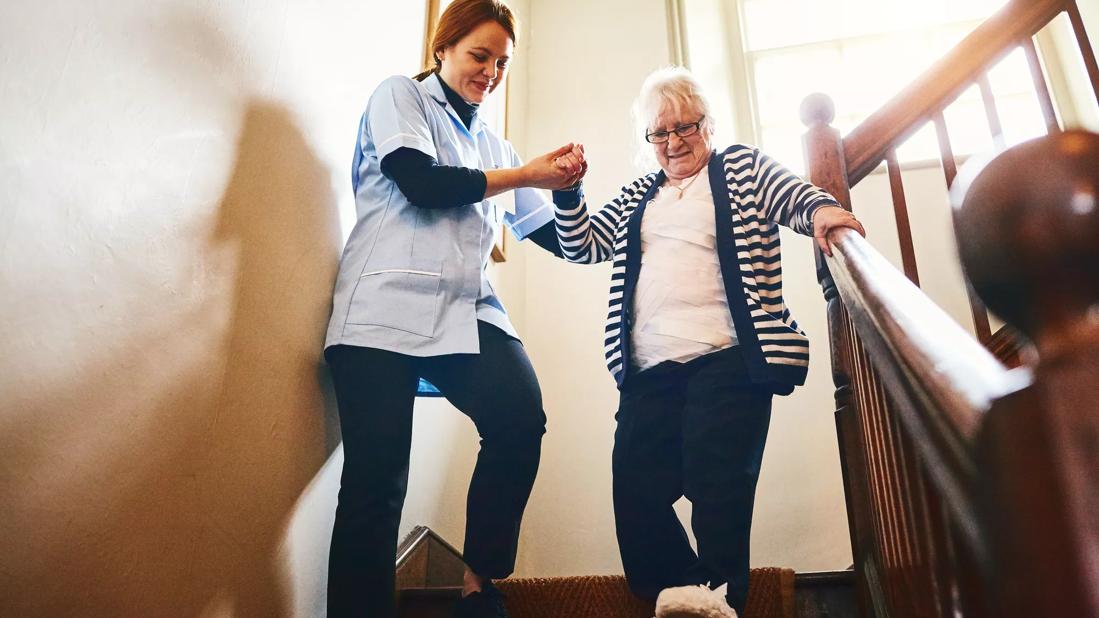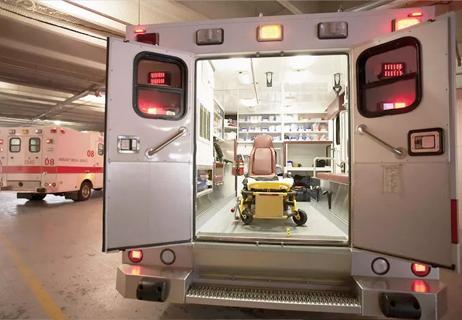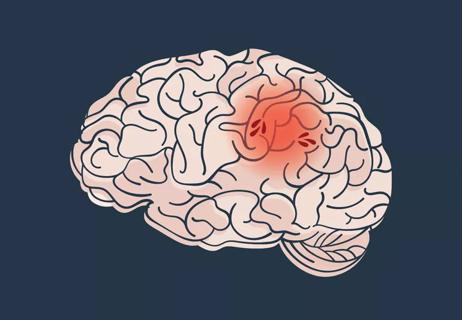A good support system can help ease your transition

Having a stroke is a life-changing event in many ways. Even if yours was minor, you’ll likely have some lingering disability when you leave the hospital. The best way to meet this challenge is to make sure things are set up at home to help you safely ease back into your everyday life.
Advertisement
Cleveland Clinic is a non-profit academic medical center. Advertising on our site helps support our mission. We do not endorse non-Cleveland Clinic products or services. Policy
You can expect to go home with new medications, rehabilitation plans and goals for keeping your risk factors, such as your cholesterol and blood pressure, in check. You’ll need a good support network, and your caregivers, family and friends can help right away by modifying your home for better safety and convenience.
Before you go home, your healthcare team will help make sure you’re ready to manage things at home. They’ll review your social, psychological, medical and environmental situation, says neurologist Zeshaun Khawaja, MD.
There are several key questions the team will want to answer, he says.
Enviromental: Are there people who can assist you with daily activities? Do you have sufficient financial resources to support your continuing care (including medications, doctor’s visits and home modifications)?
Psychological: Are you coping well with the aftereffects of your stroke? Do you have signs of depression or anxiety that might keep you from participating in your treatment?
Medical: Are you stable enough to go home? Have your risk factors been identified and has a treatment plan been established?
Physical: Is therapy required? Are there any issues with mobility or self-care?
Advertisement
Another important consideration as you prepare to leave the hospital is your home safety evaluation. A social worker will do a walk-through at your home to review your needs and determine what home modifications can help meet them.
A case manager will work with you and members of your support network to purchase and install what you might need, including a walker or other assistive device, ramps or grab bars. Caregivers also can set up a calendar to help track appointments and medications, especially if you’re having memory issues.
“Patient and family involvement and engagement in discharge planning after stroke is very important to ensure the patient has all the resources they may need to maximize recovery in a safe environment,” Dr. Khawaja says.
The American Stroke Association recommends several minor adaptations for each room in your house:
In the kitchen:
In the bathroom:
In the bedroom:
Your doctor may recommend care at an acute rehabilitation facility before you go home. Here, intensive therapy five days a week will help prepare you for moving through your house and caring for yourself again.
If you don’t meet the criteria for a facility, your doctor may suggest that you have a family member stay with you for awhile. Home care is also available, but typically not 24/7.
“The goal of acute stroke treatment and rehabilitation for stroke survivors is to maximize recovery in a safe and productive manner and to ultimately achieve independence and freedom from disability,” Dr. Khawaja says.
Advertisement
Learn more about our editorial process.
Advertisement

Your age, the type of stroke you had, the cause and the location can all impact your recovery

It can be overwhelming, but habit changes help lower your risk of another stroke

The short answer from a cerebrovascular expert

Act fast: Your risk for recurrent stroke is highest just after your first stroke

These ‘no-calorie’ drinks are linked to poor health

First study of deep brain stimulation in stroke survivors

Lorem ipsum dolor sit amet. Et odio Quis vel ipsam omnis eum alias deleniti et placeat impedit non voluptas galisum hic autem enim et cupiditate aliquid. Est beatae quidem non facilis autem ut commodi nisi aut tempore rerum et dolores voluptatem cum enim optio id sapiente quasi. Ad laboriosam officiis 33 cupiditate sequi ea voluptatum consectetur qui necessitatibus voluptate et quasi doloremque et facere explicabo quo explicabo officia

You can counter the risk of prediabetes-related heart attack or stroke by eating more fruits, vegetables and whole grains, as well as exercising regularly

Type 2 diabetes isn’t inevitable with these dietary changes

Applying a hot or cold compress can help with pain